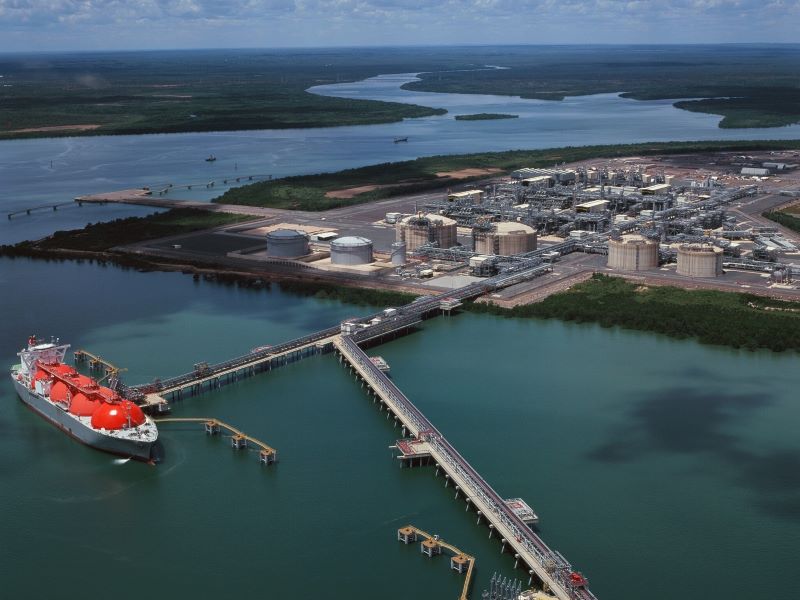The national science agency has been tasked with developing a business case for what would be one of the largest carbon capture storage projects in the world near Darwin, despite a similar test project and billions of dollars in investment struggling to demonstrate the viability of the controversial approach in Australia.
On Tuesday, the CSIRO announced it would lead a consortium of the Northern Territory government, engineering companies and fossil fuel giants in assessing the viability of a large-scale low emissions carbon capture utilisation and storage (CCUS) hub outside of Darwin.

CSIRO said the Northern Territory hub could enable the development of an interconnected hydrogen industry and the utilisation of the carbon dioxide captured in other industrial processes, describing the facility as a potential “blueprint for future low emissions hubs around Australia”.
Scientists involved stressed the project is a business case for whether a large CCUS hub could be developed, rather than plans for one. The business case study is jointly funded by CSIRO, the Northern Territory government and industry partners.
“We’re looking at those examples from around the world of how low emission hubs are being developed, and trying to take those learnings and see if they can be applied in [the] Australian context,” CSIRO’s lead researcher on the project Dr Andrew Ross said.
Carbon capture utilisation and storage involves diverting the carbon dioxide emitted from processes like burning fossil fuels for long-term underground storage or use in other areas.
CCUS has been touted as a way to reduce greenhouse gas emissions in Australia and has been backed by the federal and some state governments.
But climate change experts and environmental groups have warned it remains unproven and prohibitively expensive for most applications, despite decades of research and billions of dollars invested around the world.
Exploration of a Darwin hub follows the release of a CSIRO CO2 Utilisation Roadmap last month. Sponsored by federal and state governments, industry groups and fossil fuel giants, the roadmap outlines ways to build out CCUS technologies to support new industries and reduce carbon emissions.
Dr Ross told InnovationAus the technology is proven and there are exciting business models being used in European CCUS hubs, with several more projects active around the world.
“It’s something of the order of 25 million tonnes of CO2 per annum already being stored, [and] many, many more projects in various stages of development.
“I think it’s a proven technology… I think it’s a common misconception that it’s an unproven technology,” Dr Ross said.
The CSIRO scientist said all emissions reduction options need to be explored and CCUS is shaping as an important tool in achieving net zero emissions.
But other experts disagree strongly and hold little hope for a viable facility in Australia.
University of Queensland professor in economics and climate change expert John Quiggin said over the last 10 years Australia alone has poured around $2 billion into CCUS research and projects that have “gone nowhere”.
“We’ve put a lot of effort into [CCUS] and proved in most applications it’s just prohibitively expensive. And there doesn’t seem to be any real prospect that that’s going to change,” he said.
Professor Quiggin points to the struggles of Chevron’s Gorgon liquified natural gas project, which includes the world’s largest carbon capture storage facility on an island off Western Australia.
It has received $60 million in federal funding but has faced delays and operational problems, and this year fell short of the carbon dioxide storage targets it promised regulators.
Dr Ross said the potential Norther Territory hub would not necessarily rely on a single company to store the CO2 as Chevron does at the Gorgon facility. Multiple parties and storage options could help mitigate risk and lower costs, he said.
“It’s likely to be much more collaborative in scope. CO2 emission reductions is a cost. And so, where you can get to that economy of scale, where you can collaborate to reduce those costs, that’s to the benefit of all.”
Dr Ross explained the potential Darwin hub could take CO2 from existing Northern Territory LNG facilities but could also one day support a new low emission industrial sector and store CO2 from high emissions products like petrochemicals and steel where abatement is difficult.
“Some of those processes are quite hard to decarbonise,” Dr Ross told InnovationAus.
“Also, you can use the carbon dioxide [captured] to generate [new] products as well.”
Professor Quiggin, who resigned from the Climate Change Authority in 2017 because the Coalition government had repeatedly refused to accept the independent authority’s advice on climate change, said he is worried the Darwin hub would be little more than a “fig leaf” to cover the government’s planned expansion of gas.
“Obviously this is a hugely controversial thing [within the Coalition government] and they’re trying, on the one hand, to bring some people along from total denialism.
“And on the other hand, trying to stave off the pressure to properly decarbonise. In that sense, [carbon capture and storage] serves as ‘we can have our cake and eat it too,’” Professor Quiggin said.
Do you know more? Contact James Riley via Email.

